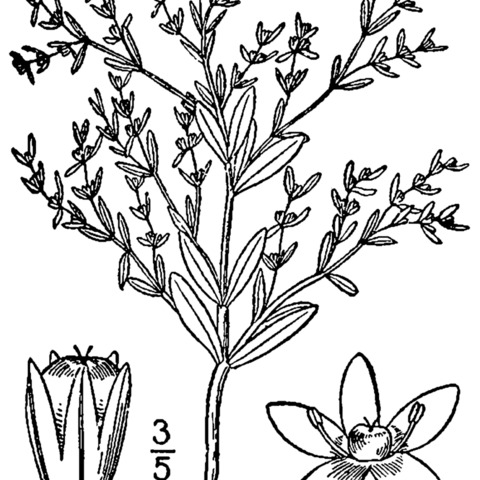Plants annual; taproot filiform to slender. Stems erect, usually much-branched, 4-30 cm, retrorsely to spreading-pubescent mostly on 1 side. Leaves: stipules subulate to lanceolate, 0.5-4.5 mm, apex acuminate, sometimes fimbriate; blade usually dotted or blotched, oblanceolate to elliptic or obovate, 2-25 × 0.5-7(-10) mm, herbaceous to leathery, apex subobtuse to acute or cuspidate, glabrous or occasionally with very few scattered trichomes along midrib. Cymes terminal, 25-70+-flowered, branched, loose to compact, forming clusters 3-10 mm wide. Flowers 5-merous, short-cylindric, with enlarged hypanthium and calyx ± cylindric, 1.1-1.6 mm, glabrous or with few scattered hairs; sepals greenish to brownish, veins absent, linear-oblong, 1-1.2 mm, leathery to rigid, margins white to translucent, 0.05-0.1 mm wide, scarious, apex terminated by mucro, hood narrowly rounded, mucro short-conic, 0.05-0.3 mm, ± minutely scabrous; staminodes absent; styles 2, 0.07-0.6(-0.7) mm. Utricles obovoid to obconic, 0.7-1 mm, minutely papillate. 2n = 32, 36.

